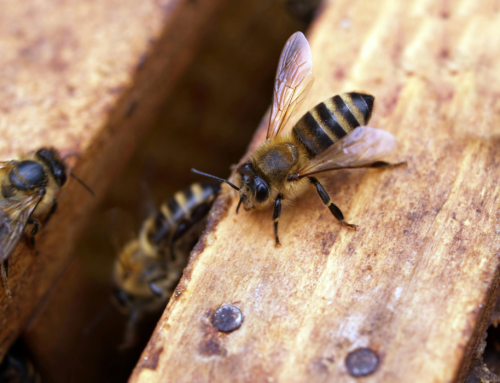Many recognize the honey bee as a pollinator in British Columbia, however; the province is home to nearly 600 species of bees. The Native Bee Society of BC (NBSBC) is striving to collect more knowledge about the nearly 600 species of bees found in BC. With the success of their 2022/23 Bee BC project, NBSBC continued the work they started through their 2023/24 Bee BC project.
The diversity of species in BC means each species has its own preferences for forage, habitat and nesting. Without this information we can’t ensure optimal health for all species. Through their project NBSBC trained Master Melittologists, a group of citizen scientists across BC learning bee identification skills and survey methods. NBSBC’s first launched this training in last year’s project so they were able to offer beginner and intermediate training this year. With this training, documentation of bee health issues like bee population declines, expanding ranges of invasive species, and critical forage plants will increase.
Over the 2023 season the BC Master Melittologists collected 1263 specimens, each associated with a plant that provides important forage resources. Preliminary identifications of these bees showed that the collections included more than 78 species, from 27 genera, and foraging on 128 different plants. These specimens included both specialist foragers, such as the snowberry bee (Dufourea holocyanea), and an undescribed Cuckoo bee associated with it. The samples also included generalist foraging bees, including honey bees and fifteen different bumble bee species. Species introduced to BC were also observed, both species that were already known, and a previously undocumented introduced species.
“As the BC Bee Atlas and Master Melittologist program continue to look through the collected data, we expect to continue to make amazing discoveries on the diversity of bees and to contribute to BC knowledge on the plant species that our bees rely on,” said Paula Cruise, NBSBC co-chair.
The data collected by the Master Melittologists was used at education and outreach events. NBSBC’s goals is to educate the public on these bee health issues and what they can do to increase bee health like planting beneficial forage and avoiding invasive species that can harm certain bee species.
To support these events, NBSBC created two plant list handouts focused on Coast BC and the Southern Interior to distribute at presentations and share on their website. They are created a 40-page slide deck so their members can offer education experiences in their communities.
If you’re interested in learning more about the project or would like to get involved, visit NBSBC’s website.














